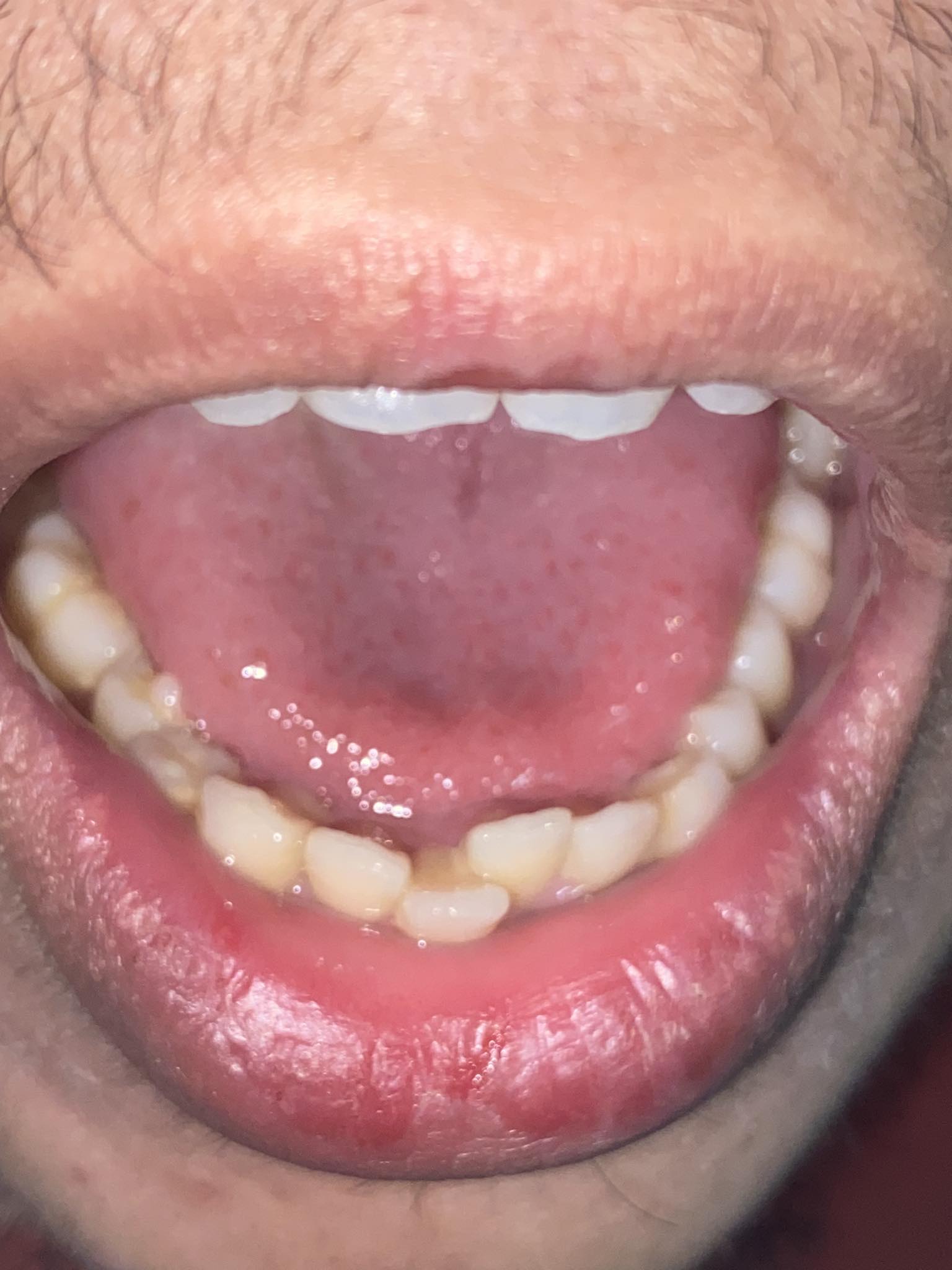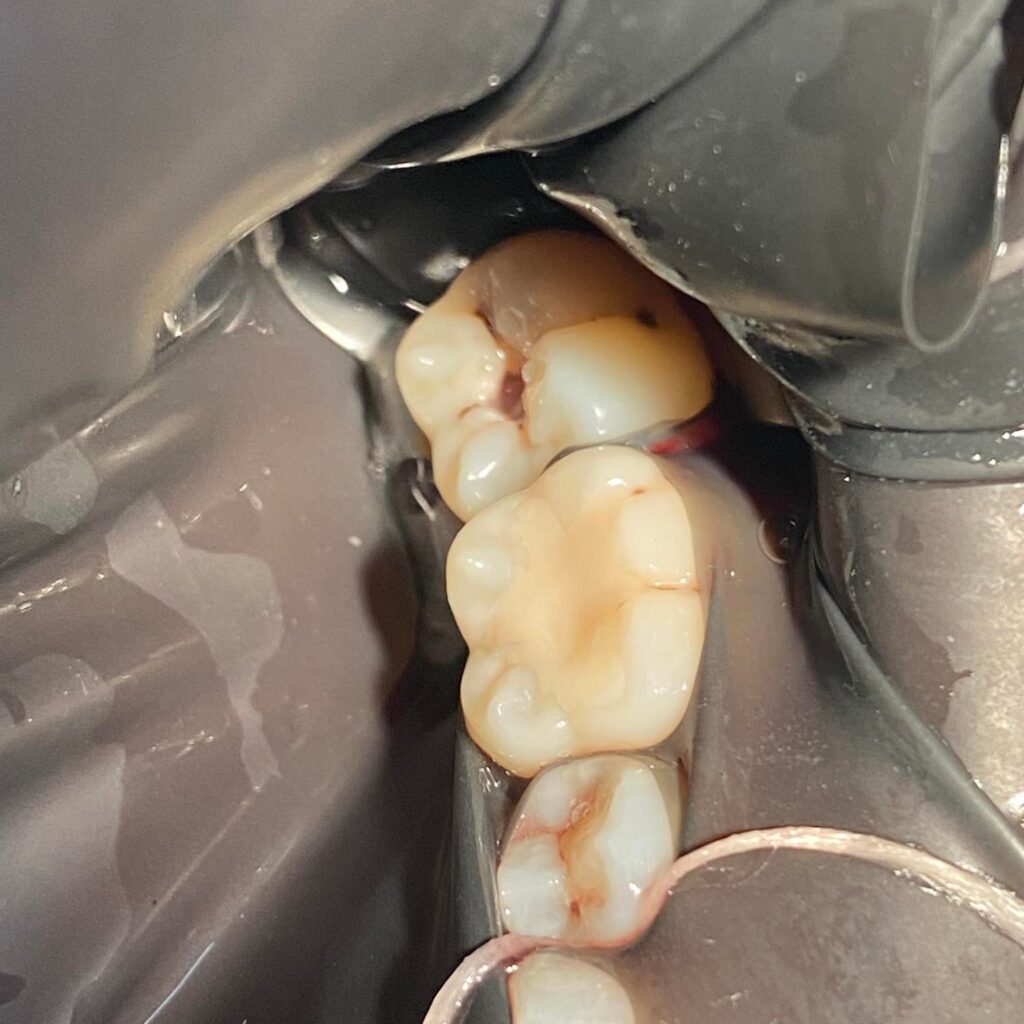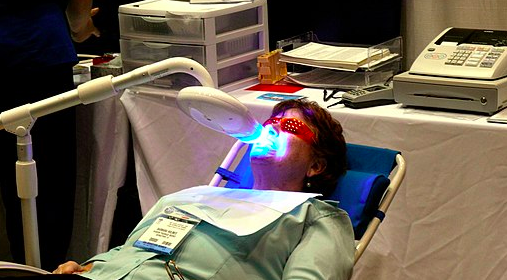A person’s smile imparts a memorable first impression to most people, and because of this, many opt to fix crooked teeth.
If you look around you, people have different kinds of smiles because they have different alignments of teeth! Some have the most perfect smile like those of celebrities while some are not blessed with it.
What if your teeth are a bit crooked, twisted, or spaced? To know more about why it is that way and different ways to fix crooked teeth, then this article is for you.
What causes crooked teeth?
Every one of us had two sets of teeth, namely our baby teeth and permanent teeth. Both of these sets of teeth can be crooked.
The alignment of our baby teeth and permanent teeth are different as these teeth have completely different anatomies. Hence, crooked baby teeth do not immediately translate to you having crooked permanent teeth too!
So why are some people blessed with straight teeth even without any intervention while some struggle with crooked teeth? Here are some reasons that explain it:
Size of the jaw
Our teeth are placed on our jaws, and the size of our jaw relative to the teeth plays a huge role in why some smiles are crooked.
Let us talk a bit about history. In contrast to our human ancestors, our diet consists of a lot of softer meals. We eat more processed food and we chew considerably less tough meat than before.
So through the centuries, our jaws evolved to be shorter and smaller. The teeth can become crowded in these relatively smaller jaws because the allocated gum space is a lot smaller.
This alteration in jaw sizes leads to more incidences of crooked and crowded teeth.
Thumb-sucking habit
Some habits can also move teeth into a crooked position. Remember how infants find comfort in sucking their thumbs? This is a normal reflex for babies and some even find it a must for them to go to sleep.
Unfortunately, some kids do not drop the habit at the correct time. Thumb-sucking or dummy sucking is a problem if it continues for more than 4 years of age.
When sucking, it exerts continuous pressure on the teeth, bringing them more forward. The misalignment can push through to adulthood if no intervention is done to stop the habit or re-align the teeth.
Tongue thrusting habit
Aside from thumb-sucking, a difficult habit to develop is tongue thrusting. This refers to the excessive habit of pushing the back of your teeth with your tongue.
Since our tongue is a very powerful muscle, too much pressure from the thrusting habit will push your teeth forward. This would lead to a crooked alignment of teeth which would become more noticeable if no intervention is done.
Extended use of pacifiers.
It is quite a similar concept to that of thumb-sucking. Pacifiers are great to keep babies comfortable, but when they could not let go of sucking on pacifiers, the alignment of their teeth suffers.
The pressure from the sucking action and the physical interference from the pacifier push the teeth outward and forward.
Genetics
If your parents have crooked teeth, chances are, you might inherit their smiles as well. However, note that you inherit genes regarding jaw size, jaw alignment, and teeth size.
Sometimes, a child can inherit their parent’s small jaws and large teeth. Of course, the lack of space will lead to teeth crowding.
Poor oral hygiene
A commonly overlooked cause of crooked teeth is poor oral hygiene. You must have your teeth checked by the dentist every year so that your cavities would be treated and your gums would be healthy.
Failure to take care of your teeth and gums can lead to early tooth loss and the remaining teeth would fail to develop in a straight alignment.
Poor nutrition
Our oral health is directly related to how we take care of our bodies. And our bodies would not develop well if we do not feed them properly!
Poor nutrition can be a cause of tooth decay and degraded growth and development. So, it is common for poorly nourished kids to have crooked teeth.
Injuries
Injuries can happen to anyone. Both kids and adults are susceptible to injuries to the head and neck. The pressure from a hit to the jaw or teeth can knock out teeth, or change their alignment.
Is it bad if my teeth are crooked?
You may be wondering, “is it bad if my teeth are crooked?”
The simple answer is crooked teeth are not bad all the time. Mildly crooked teeth are usually not a health problem, but they can be a source of lower self-esteem.
Mildly crooked teeth are those with simple crowding and a bit of misalignment. If you have these, you can opt to have your dentist have a look if you are very unhappy with the way they look.
On the other hand, moderate to severely crooked teeth must be fixed because they lead to hall sorts of health problems, like the following:
- You can develop gum disease in severely crooked teeth. The alignment of teeth sometimes makes it difficult for you to brush them and remove plaque. When not treated, you can have irreversible damage to your teeth, gums, and even bone.
- We use our teeth to chew. Unfortunately, very crooked teeth sometimes make it hard for people to chew! Failure to properly chew food can lead to choking hazards and digestion problems.
- Our teeth play a factor in the way we speak. Severely crooked teeth can alter the way you articulate some sounds and cause speech problems.
- Crooked teeth can be a problem when the burden of chewing is not evenly distributed to all teeth. Some teeth will experience more wear and tear.
- Severely crooked teeth can lead to crack teeth, and in extreme cases, temporomandibular joint problems and headaches.
- And of course, one’s self-esteem is negatively affected when they are unhappy with the appearance of their smile. Some would even avoid smiling or social interactions in fear of other people finding their smiles to be unattractive.
Is it possible to fix crooked teeth?
There are always a set of solutions ready for any dilemma that you may have with your teeth! And it is up to you to choose the most comfortable treatment or fix to crooked teeth.
Having straighter teeth is a huge confidence boost to most people, and they seek the help of a dental professional to provide them with treatment options that are effective and safe for them.
Furthermore, fixing crooked teeth is a need for people with compromised teeth and gum health due to severe misalignment.
So, it is indeed possible to fix crooked teeth. It all boils down to what treatment is prescribed by your dental professional. Also, avoid treating it yourself if you are not guided by a dentist!
Treatment or fix for crooked teeth
Understanding why teeth are crooked and how these affect health and confidence is essential before knowing possible treatments for them.
Fortunately, dentists or orthodontists are flexible in providing options for patients! The most common way to fix crooked teeth of varying severity is with the use of braces.
Braces are suitable for both kids and adults, as long as the teeth and gums are healthy enough to hold onto them.
Different cases mean that the time it takes to fix the crooked teeth vary as well. Treatment time ranges from months to years.
The following is an overview of the different types of orthodontic braces dentists use to fix crooked teeth:
Metal braces
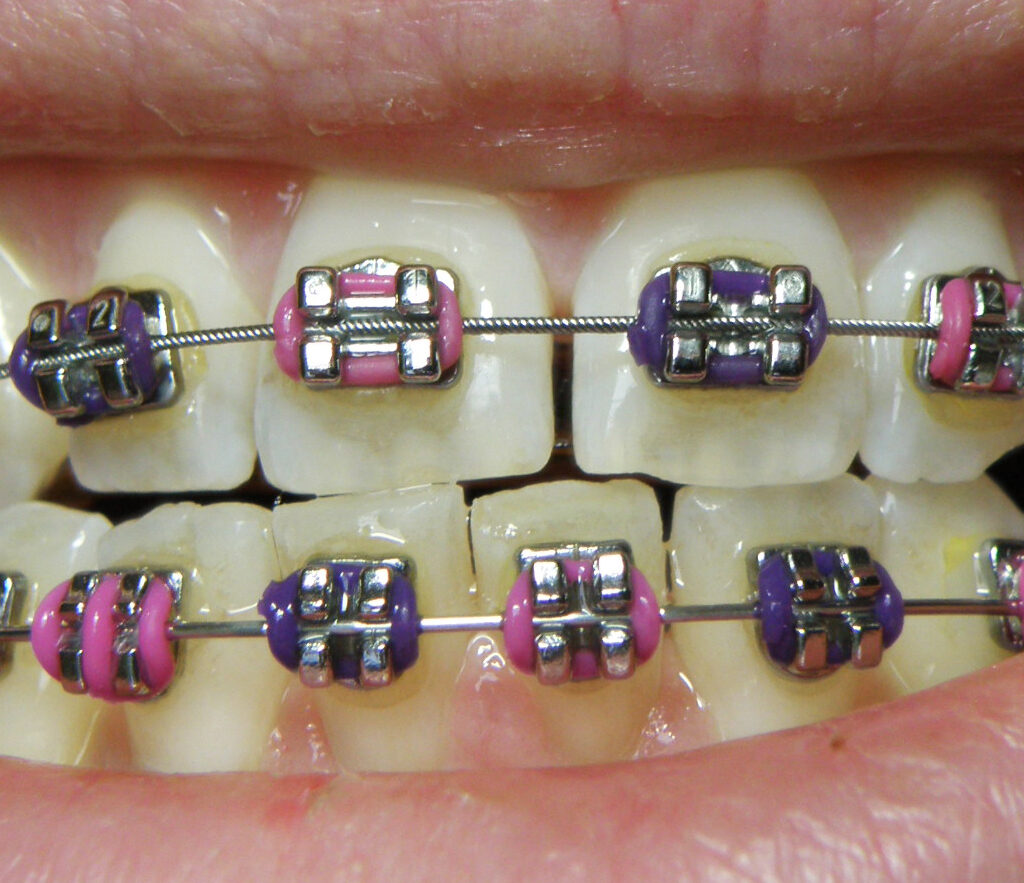
The first thing that springs to your mind when talking about braces is the metal ones. These are fixed metal apparatus that is attached to teeth through brackets, wires, and bands.
Metal braces have been around the longest, and it is used in a variety of severity of crooked teeth.
Ceramic braces
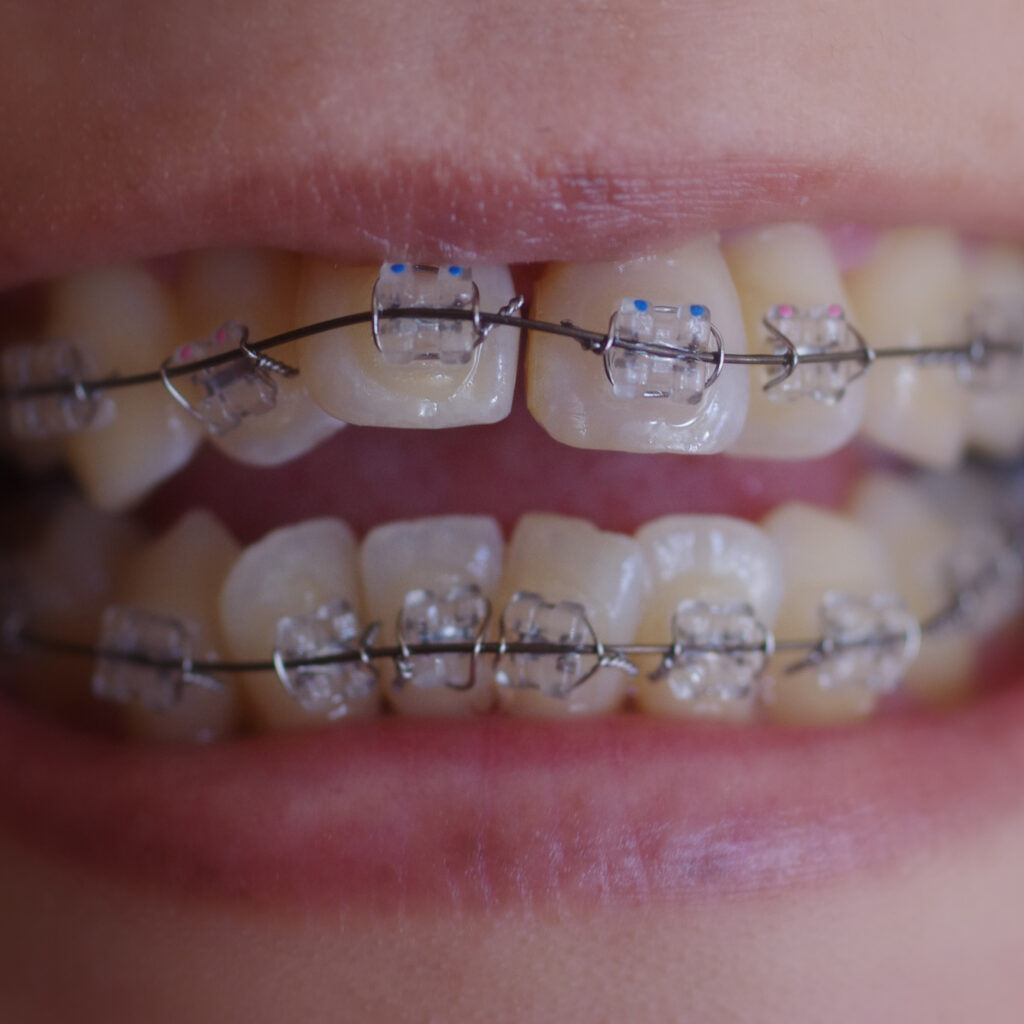
If you do not like having that “metallic smile” from metal braces, ceramic ones might be the choice for you.
There’s not a lot of difference between ceramic and metal braces. However, these are made with tooth-colored or clear brackets to prevent them from being too obvious.
Lingual braces
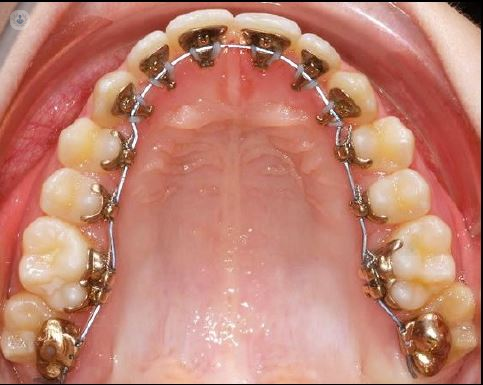
Another way to make braces less conspicuous is by attaching brackets and wires at the back of the teeth, facing your tongue and palate.
This is called the lingual braces. They work similarly to other kinds of braces, but they are almost invisible when you smile!
Invisible braces
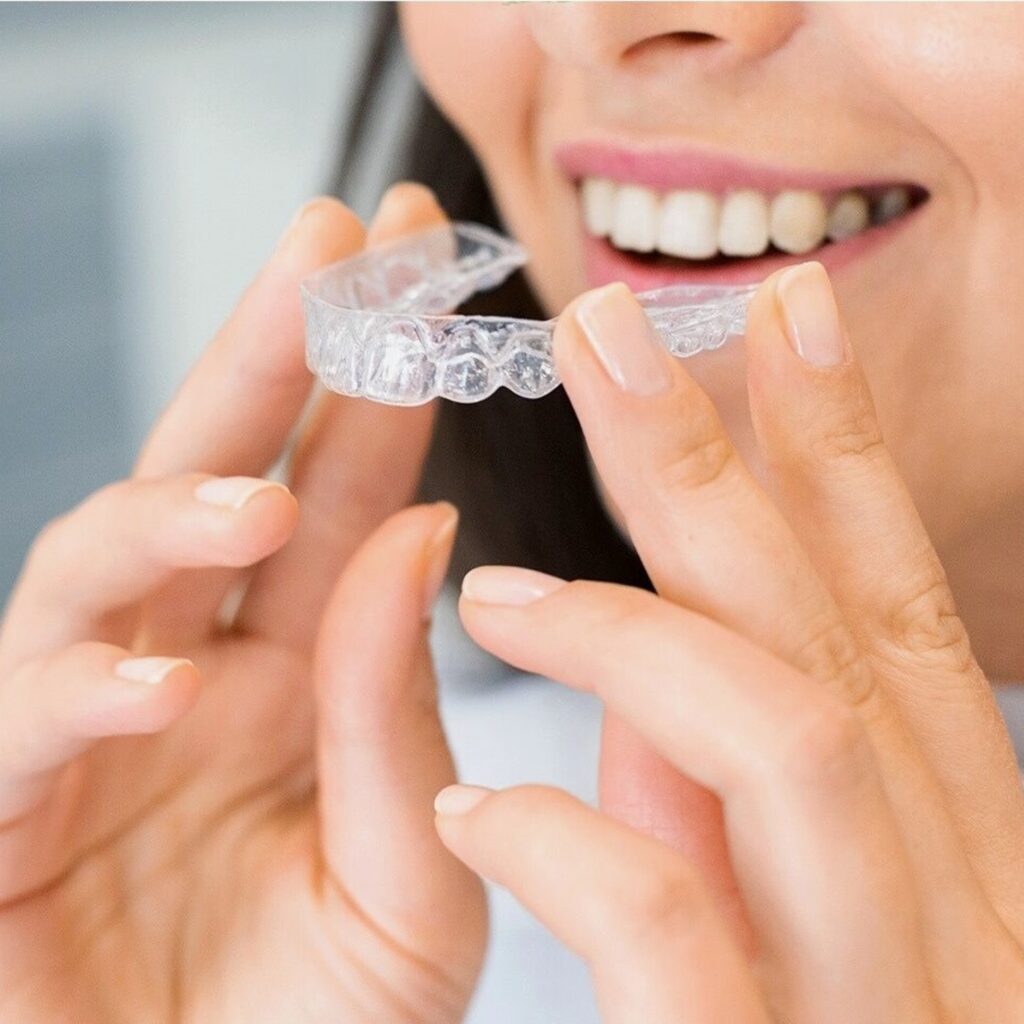
Invisible braces are an option for adults who want to fix crooked teeth. No brackets or wires are used here. Instead, a clear plastic personalized for you is used.
This kind of treatment looks a lot like mouthguards but had its limitations when it comes to cases that it can be used on. It usually costs a lot more and is not recommended for severely crooked teeth.
How do you stop crooked teeth?
This means to fix crooked teeth is sometimes too expensive or too uncomfortable for most people, especially kids. Having fixed braces on your teeth takes some time to get used to.
Sometimes, the best way to manage crooked teeth is to identify its early onset and prevent it from progressing to severe misalignment. Here is how you can do that:
Immediately stop the thumb-sucking habit
Kids usually go unnoticed with their prolonged thumb-sucking habit. It is best for adults to train kids to stop the habit when their teeth are starting to erupt to avoid crooked teeth.
Practice good oral hygiene
Poor oral hygiene can still be corrected with regular visits to the dentist and brushing with fluoridated toothpaste twice a day.
Practicing good oral hygiene goes a long way for kids, as they preserve both their baby teeth and permanent teeth.
By practicing good oral hygiene, you can prevent early tooth loss that causes teeth to develop in crooked positions.
Know the history of crooked teeth in the family
Sometimes, parents with crooked teeth also have children with the same smile. It can be because of similarities in poor oral hygiene, habits, or inherited jaw and teeth sizes.
Knowing the history of such can help you determine early if intervention is needed for crooked teeth. And if so, you can opt for preventive measures and avoid extensive treatment!
Can I fix crooked teeth without braces?
The first thing that comes to mind when you want to fix crooked teeth is using braces. However, there are a few more options when it comes to fixing them without having brackets and wires permanently glued to your teeth.
Surgery
For severely crooked teeth due to misalignment of the jaw, teeth-straightening surgery is sometimes indicated.
Surgery is a radical option for fixing crooked teeth, but sometimes, there are no other choices for badly aligned jaws.
In surgery, the bones of the jaw holding the misaligned teeth are repositioned and allowed to heal in their corrected place.
Veneers
On the other hand, very minor misalignment of teeth can be fixed with veneers. Veneers are used to give an illusion of straight teeth without actually changing the position of any tooth.
Because of this, veneers are limited only to correcting a few misaligned teeth. The dentist will fit you with veneers that will appear straight when you smile. Hence, these are mainly used for crooked front teeth as these are the ones seen when smiling.
These other options for fixing teeth without braces all depend on what can work for certain types of misaligned teeth. Hence, it is up to the judgment of the dental professional to provide you with options that are best for you.
Conclusion
Having a not-so-straight smile can happen to anyone. Kids, teens, and adults can notice that their smiles are not as straight as that of celebrities. If they are not too happy with their smile, or feel that it affected their oral health, there are numerous ways to fix crooked teeth.
They can always opt to have braces or other treatment, as long as they have it done with a dental professional.
Crooked teeth are from all sorts of causes, including hygiene, genetics, nutrition, and much more. But, the most important thing is to make sure that the causes or onset of crooked teeth are identified, so you can have it treated in no time!


